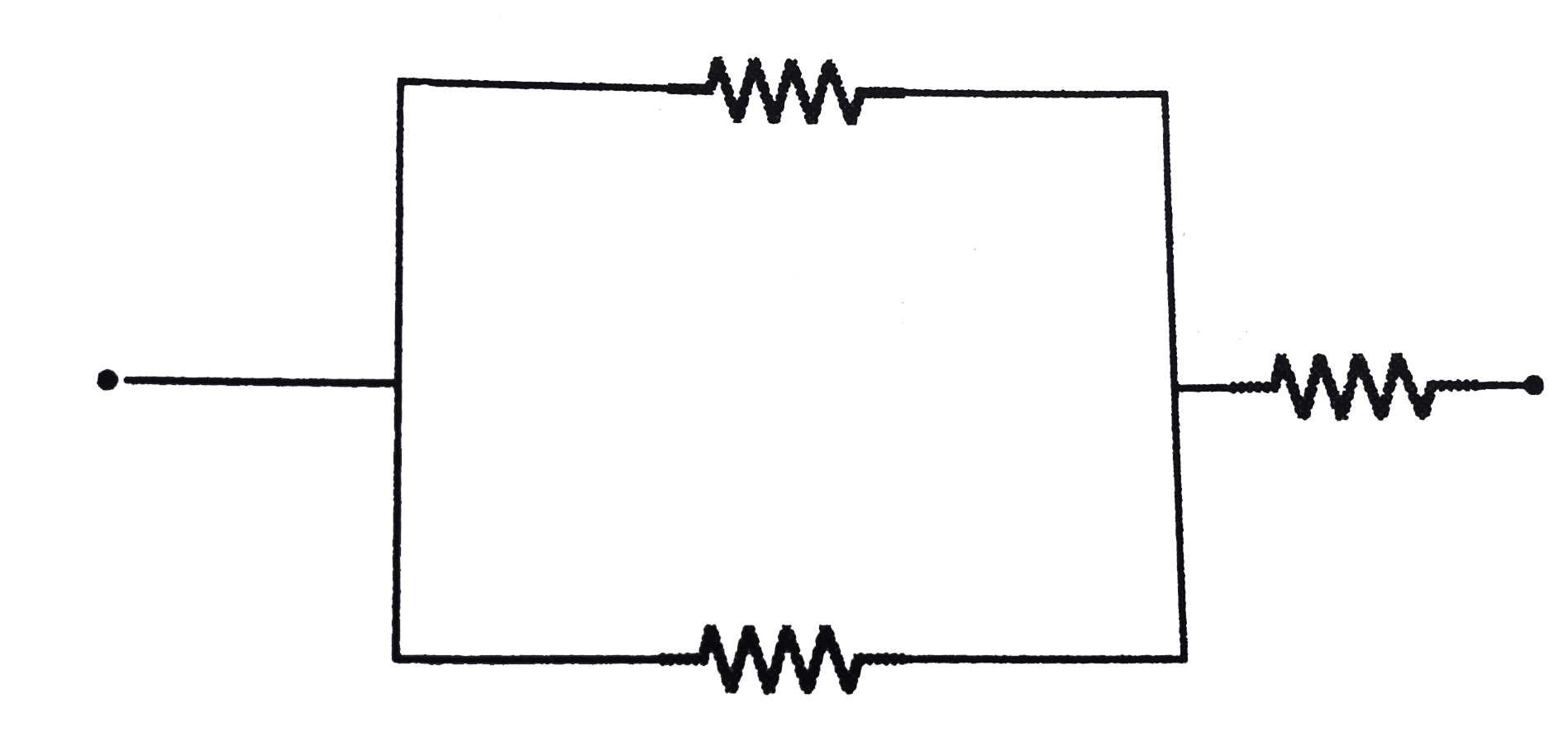The maximum voltage that can be applied to 5KΩ and 8W resistor without exceeding its heat dissipating capacity is
100 V
400 V
160 V
200 V
The correct Answer is:D
To find the maximum voltage that can be applied to a 5 kΩ (5000 Ω) and 8 W resistor without exceeding its heat dissipating capacity, we can use the formula relating power, voltage, and resistance.
1. Identify the given values:
- Resistance, R=5kΩ=5000Ω
- Power, P=8W
2. Use the power formula:
The power dissipated in a resistor can be expressed as:
P=V2R
where V is the voltage across the resistor.
3. Rearrange the formula to solve for voltage:
To find the voltage, we can rearrange the formula:
V2=P×R
Taking the square root of both sides gives:
V=√P×R
4. Substitute the known values:
Now, substitute the values of P and R:
V=√8W×5000Ω
5. Calculate the product:
First, calculate the product:
8×5000=40000
6. Take the square root:
Now, find the square root:
V=√40000=200V
7. Final answer:
The maximum voltage that can be applied to the resistor without exceeding its heat dissipating capacity is:
V=200V
- Resistance, R=5kΩ=5000Ω
- Power, P=8W
The power dissipated in a resistor can be expressed as:
P=V2R
where V is the voltage across the resistor.
To find the voltage, we can rearrange the formula:
V2=P×R
Taking the square root of both sides gives:
V=√P×R
Now, substitute the values of P and R:
V=√8W×5000Ω
First, calculate the product:
8×5000=40000
Now, find the square root:
V=√40000=200V
The maximum voltage that can be applied to the resistor without exceeding its heat dissipating capacity is:
V=200V
Topper's Solved these Questions
- BOOK - AAKASH SERIESCHAPTER - CURRENT ELECTRICITYEXERCISE - LECTURE SHEET (EXERCISE-VI LEVEL- II (ADVANCED) (Straight Objective Type Questions))7videos
CURRENT ELECTRICITY
- BOOK - AAKASH SERIESCHAPTER - CURRENT ELECTRICITYEXERCISE - LECTURE SHEET (EXERCISE-VII LEVEL - I (MAIN) (Straight Objective Type Questions))9videos
CURRENT ELECTRICITY
- BOOK - AAKASH SERIESCHAPTER - CURRENT ELECTRICITYEXERCISE - LECTURE SHEET (EXERCISE-V LEVEL-II (ADVANCED) (Straight Objective Type Questions))5videos
CURRENT ELECTRICITY
- BOOK - AAKASH SERIESCHAPTER - CURRENT ELECTRICITYEXERCISE - PROBLEMS (LEVEL-II)27videos
CURRENT ELECTRICITY
- BOOK - AAKASH SERIESCHAPTER - DUAL NATURE OF RADIATION AND MATTEREXERCISE - PRACTICE EXERCISEX42videos
DUAL NATURE OF RADIATION AND MATTER
Similar Questions
Three 10Ω,2W resistors are connected as in Fig. 7.34. The maximum possible voltage between points AandB without exceeding the power dissipation limits of any of the resistors is
 View Solution
View SolutionThree 200Ω resistors are connected as shown in figure. The maximum power that can be dissipated in any one of the resistor is 50 W. Find the total power in watts dissipated in the circuit for maximum voltage across the terminals A and B.
 View Solution
View SolutionWhen a voltage V=V0 cos ωt is applied across a resistor of resistance R, the average power dissipated per cycle in the resistor is given by
View SolutionAn alternating voltage V=140 sin 50 t is applied to a resistor of resistance 10 Ω. This voltage produces △H heat in the resistor in time △t. To produce the same heat in the same time, rquired DC current is
View SolutionAn alternating voltage V=140 sin 50 t is applied to a resistor of resistance 10 Ω. This voltage produces △H heat in the resistor in time △t. To produce the same heat in the same time, rquired DC current is
View SolutionEach of three resistors in figure has a resistance of 2.4Ω and can dissipate a maximum of 36 W without becoming excessively heated. What is the maximum power the circuit can dissipate?
 View Solution
View SolutionA given resistor cannot carry currents exceeding 20A, without exceeding its maximum power dissipaation ratings . By forced air cooling suppose that we increase the rate at which heat can be carried by a factor of 2. Now the maximum current that the resistor can carry is
View SolutionWhat is the maximum resistance which can be made using five resistors each of (1/5)Ω ?
View SolutionA capacitor of capacitance 3μF is first charged by connecting it across a 10 V battery by closing key K1. Then it is allowed to get discharged through 2Ω and 4Ω resistors by closing the key K2. The total energy dissipated in the 4Ω resistor is equal to
 View Solution
View SolutionThe maximum load that a wire can sustain is W. If the wire is cut to half its value, the maximum load it can sustain is
View Solution

